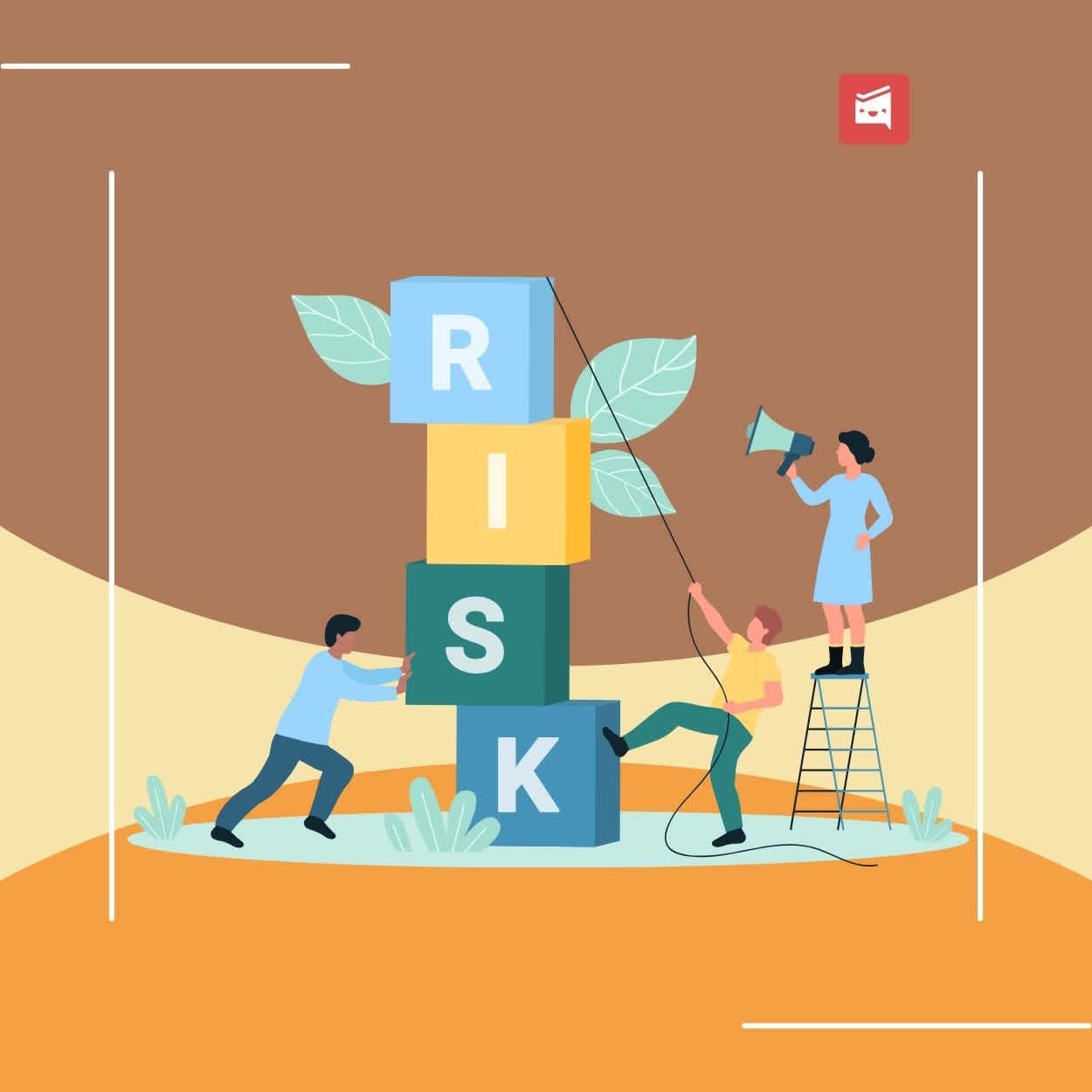How to Build a Risk-Based Cyberdefense Plan for a Collaborative Team
ByJulian Gette
Workast publisher

Workast publisher
Why do collaborative teams with decent security budgets still get breached? The lack of tools is not the core problem here. The problem is that security frameworks treat teams as if they work in silos, when in reality, the situation is more complex. People share files through whatever platform works fastest. They access systems from coffee shops, home offices, and client sites.
Each connection point creates a risk that traditional security models cannot always detect. A single compromised credential can spiral across integrated platforms before detection happens. The usual approach of securing everything equally spreads resources too thin while missing what actually matters.
A bulletproof security plan starts with getting to the root of the problem. Because not every system failure costs the same, nor do every user have identical access needs. Hence, a risk-based defense that focuses protection where it counts most while letting teams work naturally is the best way to move forward.
Collaborative workspaces face unique attack vectors that traditional security models overlook. These risks compound as teams integrate more platforms and expand remote access. Understanding these specific threats forms the foundation for building targeted defenses.
Data Leakage and Unsecure File Sharing: Modern teams operate across multiple cloud storage platforms, often without any centralized visibility into data movement. Files get duplicated across Dropbox, OneDrive, and Google Drive accounts, creating orphaned copies with inconsistent access controls.
It’s a perfect opportunity for shadow IT to flourish when approved platforms cannot meet immediate collaboration needs. Teams resort to unauthorized file-sharing services that bypass corporate security policies. These platforms lack enterprise-grade encryption and audit trails.
Possibility of Unauthorized Access: Shared credentials, weak authentication, and session persistence across platforms make lateral movement easier once a foothold is established. Remote team structures often blur the boundary between internal and external access.
Identity federation can backfire when trust between platforms is assumed. If you don’t continuously reassess your access rights based on context (e.g., location, device, role), then you risk making dormant or low-privilege accounts possible entry points for deeper compromise.
Phishing and Social Engineering Attacks: Teams that rely on quick communication are highly vulnerable to impersonation. Phishing emails that spoof familiar names or platforms slip past filters and exploit urgency to trigger credential theft or malware delivery.
SaaS integrations can further amplify the blast radius of a single phished account. OAuth access tokens or connected services remain live even after password resets. So, without revocation protocols and behavior analytics, attacks can spread quickly across platforms.
This is where securing your APIs makes a difference. APIs connect everything, and if they're not properly secured, they can be the weak link that attackers exploit.
Understanding the API security architecture is vital when your teams integrate platforms like Slack with Google Drive or connect project management tools to customer databases.
A poorly configured API security architecture can quietly introduce threats by exposing endpoints, bypassing authentication flows, or allowing unintended data access. If these interfaces aren't governed with the same rigor as user access, attackers can move laterally through connected systems with little resistance.
Building an effective defense strategy requires clear objectives that align with how teams actually work. The goal is not just protection but sustainable security that adapts to changing collaboration patterns. These objectives guide every decision in your security framework.
Protect organizational assets based on risk prioritization: Not all assets carry equal business impact. Customer databases demand different protection levels than internal meeting notes. Risk-based approaches allocate security resources proportionally to potential damage rather than treating everything as equally critical.
Asset classification becomes dynamic, adjusting protection levels based on context and access patterns. A document containing sensitive client information receives enhanced monitoring when shared externally, but standard controls during internal reviews.
Facilitate smooth, secure collaboration across teams: Security controls should accelerate teamwork, not hinder it. Effective defense systems integrate with existing workflows rather than forcing teams to adopt new processes that slow down productivity or force workarounds.
Automated security decisions can effectively reduce friction points where teams traditionally bypass controls. Single sign-on implementations and contextual access policies allow smooth transitions between platforms while maintaining appropriate protection levels throughout the collaboration chain.
Foster a culture of shared responsibility and communication: Security becomes everyone's responsibility when teams understand their role in protecting collective assets. Clear communication about threats and controls builds awareness without creating fear or compliance fatigue among team members.
Regular feedback loops between security teams and collaborative groups identify gaps before they become vulnerabilities. Teams report fraudulent activities more readily when they understand how their observations contribute to overall organizational protection.
Even with security tools in place, collaboration can still expose hidden gaps. That’s because most frameworks treat users, data, and systems as isolated units. In reality, collaboration blurs boundaries between teams, platforms, and environments.
Creating a comprehensive defense plan means getting everyone on the same page from the start. Without proper planning, security initiatives fall apart when they clash with actual work patterns. Each step builds on the previous one to create a framework that addresses real organizational vulnerabilities.
Getting the right people involved early saves months of revisions later. Representatives from IT, leadership, legal, HR, and business units bring different perspectives on how security impacts their daily operations. Their input reveals collaboration patterns that security teams might miss entirely.
Mapping workflows sounds simple, but it requires digging into actual practices rather than documented procedures. Teams often develop informal file-sharing methods or communication channels that bypass official systems.
If you fail to fully grasp these interactions, it will be impossible for you to protect them effectively.
Once collaboration workflows are mapped, your next job is to assess how well protected those paths currently are. Start off with an inventory of all systems, applications, and data repositories used in daily collaboration. Examine where credentials are stored, how data is shared, and what monitoring is in place, if any.
The review should include how APIs are used to connect tools, especially third-party platforms integrated into daily operations.
From there, conduct a thorough risk assessment. This includes evaluating phishing exposure, insecure file sharing practices, gaps in multi-factor authentication, and poor session management.
Identify not just the technical weak points, but also behavioral patterns that could lead to compromise. The goal isn’t to list every possible threat—it’s to pinpoint the ones most likely to interfere with business operations or expose sensitive assets.
Not every risk deserves equal attention. Some can be absorbed with minimal fallout; others could halt operations or trigger regulatory penalties. Prioritize based on two main factors: likelihood of occurrence and potential business impact.
Collaborative environments tend to amplify small missteps, which is why risk ranking should also consider how fast a threat can propagate across integrated systems.
This prioritization must be a shared exercise. Risk owners, decision-makers, and operational leads need to agree on which threats deserve attention first. This shared understanding forms the foundation for setting achievable mitigation goals. Without buy-in at this stage, any mitigation effort will likely meet resistance or remain underfunded.
Technical controls like access management and encryption provide your foundation, but procedural safeguards determine how your teams actually handle sensitive information. Your training programs help teams recognize threats, while clear policies guide decision-making when unusual situations arise.
You must eliminate confusion when incidents occur through clear ownership assignments. Each team understands which security controls they maintain and how their actions affect overall protection. This distributed responsibility model scales better than centralized security management while building security awareness throughout your organization.
Risks aren’t static. Collaboration tools evolve, users change roles, and threat actors adapt. Continuous monitoring is the only way to keep defenses aligned with current realities. That includes real-time alerting, regular audits, and trend analysis to spot unusual behavior.
However, technology can’t catch everything. Encourage users to stay alert and report suspicious activity without fear of punishment. Implement regular security training that reflects actual threats teams may face, rather than abstract policies.
Over time, this builds a culture where security is seen as a shared responsibility, not a department’s job. That transformation is what makes a risk-based cyberdefense plan sustainable.
Collaboration won’t wait for perfect conditions, do they? Teams push forward, share quickly, and connect across platforms. Security has to match that pace without creating bottlenecks. A risk-based approach works because it reflects how people really work - fluid, fast, and often outside predefined boundaries. When defense aligns with that reality, protection becomes part of the process, not a barrier to it.
